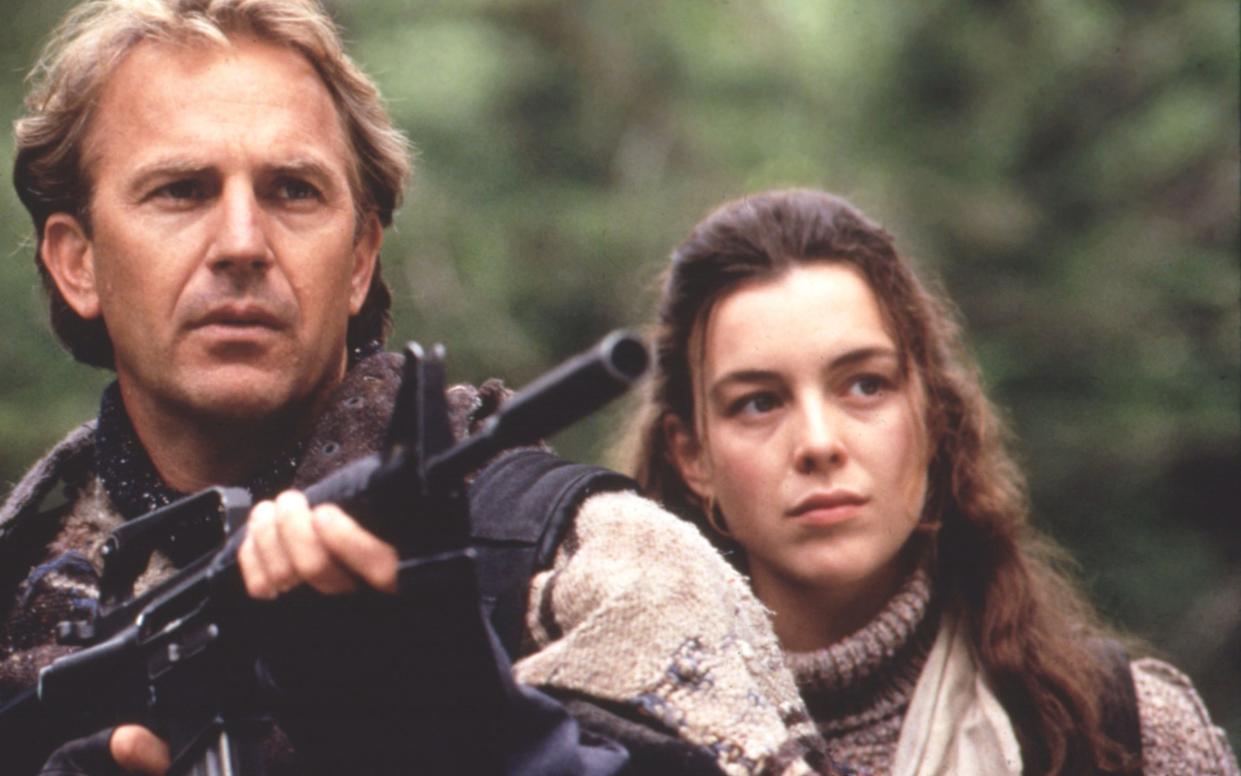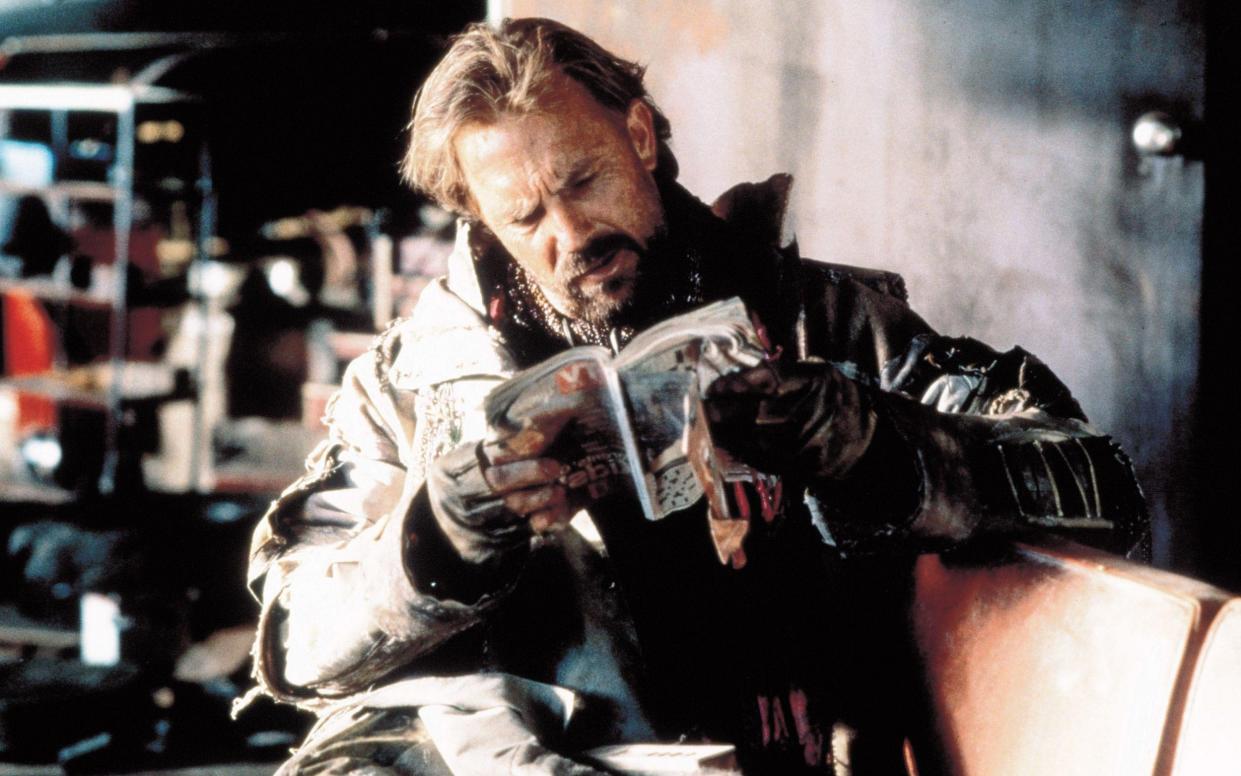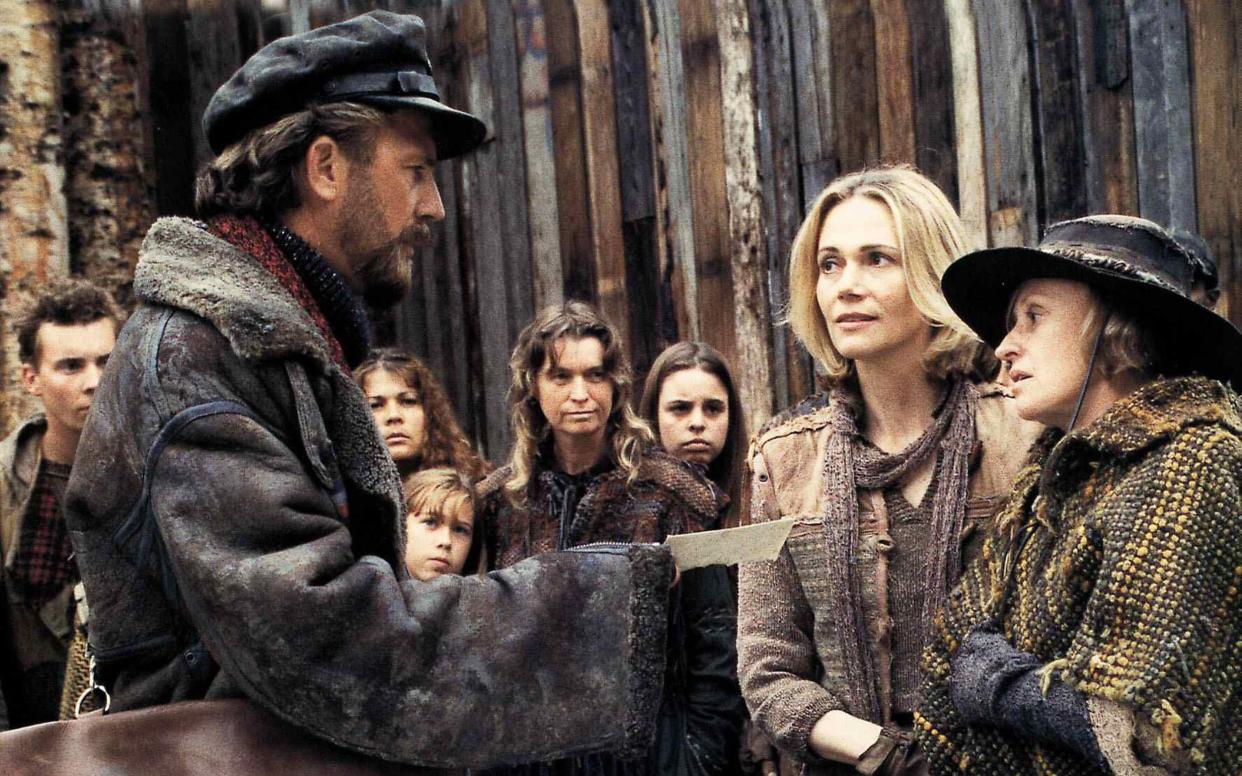Kevin Costner’s ‘mail bomb’: Inside the epic failure of The Postman

Before shooting wrapped on The Postman, Kevin Costner’s 1997 post-apocalyptic western, Warner Bros bosses Terry Semel and Robert Daly visited the set. At one point the executives peeled away from Costner – the star, director, and producer of The Postman – and approached Dennis Maguire, the first assistant director, to thank him for his part in getting the film over the line.
The Postman was huge – a three-hour epic that cost $80 million, spanned four states, and carried the considerable heft of Kevin Costner’s mid-1990s ego. The executives, though, were happy for now. “We thought we had another Waterworld,” they told Maguire, a reference to Costner’s notorious, career-dampening farce, released two years before.
Now Costner is back in the saddle with another epic, Horizon: An American Saga – Chapter One, an already polarising, three-hour western. Released on June 28, it’s the first of four proposed Horizon films. (Part two arrives in August, while filming has begun on Chapter Three, and Chapter Four is in development.)
Twenty-seven years later, The Postman still whiffs of failure. It bombed at the box office, with audiences shying away from its gee-whiz sincerity and punishing, three-hour-plus runtime. Screenwriter Brian Helgeland had the rare honour of collecting both the Golden Raspberry for worst screenplay and an Academy Award for best screenplay in the same weekend – the Razzie for The Postman, the Oscar for LA Confidential. Interview requests for this article were met (mostly) with silence. Is the film’s rep so toxically bad that a code of omerta surrounds it? Or is it Costner’s misunderstood masterpiece?
Based on the 1985 novel by David Brin, The Postman was in development for 12 years with various filmmakers attached, including Richard Donner, Barry Levinson, and Jan de Bont. The eventual film loosely follows the book.
The story is set in 2013, after the fall of civilisation. Costner’s nameless hero wanders between the remaining pockets of humanity, performing Shakespeare plays with his donkey – named Bill – in exchange for food and sanctuary. While on the run from a neo-confederate militia – led by General Bethlehem (Will Patton), both a fascist and sexist pig – Costner’s loner finds the body of a long-dead postie. Taking the uniform and mailbag, he poses as a postman from the “Restored United States”.
The exact details of America’s downfall are never specified, though we know the White House burned to the ground in “the Battle of Georgetown”. The Postman tells folk that a new president is now running the country from a disused football stadium. It’s deeply conservative stuff – a pining for the authority of the United States government.
The Postman’s tall tales give people hope, and soon enough – as word spreads – every bright-eyed eager beaver across the land wants to become a postman, a symbol of order, community, and heart-swelling Americanism.

It was almost quite different. Screenwriter Eric Roth, who later won an Academy Award for Forrest Gump, wrote early drafts, which Roth described as “satirical and ironic”. Brian Helgeland, who took over scriptwriting duties when the project was with director Ron Howard and Tom Hanks, wrote the character as a conman who doesn’t believe in the movement he inspired. In Helgeland’s version, the Postman’s tales were simply a means “to get food and get laid and not get killed”. But when Kevin Costner joined, he wanted to remove the cynicism and make the character sincere. “So that’s where it went wrong,” Helgeland told Mark Kermode in 2013.
Indeed, there’s an air of Costner’s farmboy-done-good brand, and straight-up self-flattery, as the Postman is dubbed “the greatest man who ever lived”.
“I would say Kevin does have an ego,” says Maguire. “Like all of them do.”
Ron Mardigian, a former agent of Eric Roth’s, described how The Postman was “a nice little two-hour movie” before Costner got his hands on the script. “Costner took over and there was no one stopping him,” Mardigian told the Los Angeles Times in 1998. “He had a vision that didn’t work, but nobody would tell him that.”
The Postman was only Costner’s second film as director – following the 1990 Oscar-winning epic, Dances with Wolves – but he had form for creative takeovers. He fell out with regular director pal Kevin Reynolds over creative control of Robin Hood: Prince of Thieves. They reconciled for Waterworld, but Reynolds quit and Costner took over the captaincy.

Helgeland’s script had been just 105 pages, but it ballooned under Costner. The version online is 137 pages; Maguire recalls working from a 159-page version. “And a full 159 pages with action,” he says.
The film required a small army on horseback, a specially constructed city – which was built around a 340ft dam – and a 1,000ft rope bridge that needed approval from multiple government agencies. Production took them from the Warner Bros lot to Arizona, Oregon, and Washington, stretching from the borders (or near enough) of Canada to Mexico to create its end-of-days vision of a dismantled United States. But Maguire remembers the studio had scheduled just 100 days for the shoot.
“That was unrealistic to me,” says Maguire. “I brought up the fact that maybe we should make some cuts. Kevin kind of blew up – ‘I like my movies long!’ I was like, ‘OK, fine, I just want to show you that it’s going to be difficult...”
It’s true that brevity has never been Costner’s forte. He’s bragged about the number of three-hour movies he’d made. For Maguire, another difficulty was pinning Costner down. They’d book meetings to go over the script – it was a big script and decisions had to be made – but the meetings would be cancelled. “I never went through the script with Kevin,” Maguire says.
Costner also took various weeks out, cutting into their prep time. “One week he went to Pebble Beach to play golf with Tiger Woods,” says Maguire. “Another time he got invited to the Clinton inauguration in Washington DC. Then the kids were on spring break... It was strange.”

Maguire wonders if Costner had problems making decisions “so played defence and disappeared”. Maguire adds: “Kevin’s not afraid of hard work but sometimes he doesn’t put in the prep to make life easier. I’m not sure why. Not willing to make the decision? Or not sure about a decision until he 100 per cent had to commit to something?”
Waterworld’s budget had famously swelled from $65 million to $175 million. That wasn’t the case with the budget on The Postman. “No, not out of control,” says Maguire. “But if Kevin wanted something, it was not an issue.” Though The Postman may have cost more than the official $80 million. “Well, that’s what they admit to,” Maguire says, laughing.
Maguire also recalls getting a call on the day of the film’s big stunt: a zipline basket ride, in which Costner zooms down from the Boundary Dam at Metaline Falls, Washington. Bob Daly and Terry Semel called to tell Maguire that Costner couldn’t do the stunt himself for insurance purposes. But Maguire knew Costner would do it regardless. “Because that’s Kevin, the $80 million gorilla,” Maguire says. “Just to do his version of Tom Cruise or something. I think a lot of it was ego.”
Shot by Australian cinematographer Stephen F. Windon, The Postman does look stunning. What really works about the film is how close its apocalypse feels – not far-flung Mad Max chaos but still recognisably our world, permeated by the same songs, TV shows, and cultural references.
See the moment in which the militia troops heckle a screening of the Van Damme action film Universal Soldier, but are delighted by The Sound of Music. Later in the film, Tom Petty turns up as himself, now a makeshift town official in post-civilisation (it was originally supposed to be Neil Young).
The Petty cameo was a point of ridicule, but The Postman is nowhere near as bad as its reputation. The opening hour is, in fact, perfectly enjoyable. Costner’s not-yet-a-hero is more interesting before he finds the mailbag.
The militia meanwhile, are worryingly prescient: racial puritans who roam the land, forcefully conscripting white men into their ranks, and bullying the towns – a vision of what the January 6 Capitol rioter types might become when society collapses.
But it all becomes a slog once the character – like Costner in the mid-90s – starts to believe his own hype. It’s torturously long, and sincere to the point of ridiculousness. In one particularly risible scene, Costner gallops on horseback in slow motion, triumphantly taking a letter from a boy’s hand (actually Costner’s son, Joe). The moment is enshrined in a statue at the end of the film – in case there’s any doubt that Costner’s film has lost all sense of self-awareness by this point.

Self-indulgence was certainly a problem. A few months after the shooting was finished, Maguire called producer Jim Wilson to check on the progress of the film. “He said, ‘Well, Kevin delivered a four-hour film and Warner Bros flipped out,’” says Maguire. “Kevin went basically kicking and screaming to three hours.”
Costner was grilled about The Postman’s 177-minute runtime before its release. “The length to me is perfect,” he told reporters, adding “I’m not a conventional thinker in terms of what movies have come to be” and “I don’t know how to do it any shorter. I don’t know what it is you don’t want to see.”
“There was a lot of stuff we shot – big action – that didn’t make the movie,” says Maguire. “But he kept the pregnant, boring parts – big pauses in the story. But that’s the director’s choices. I don’t fault him for that, ever. It’s a Kevin Costner movie.”
The Postman was written off as a stinker before it even opened – a “mail bomb”, as New York’s Daily News warned cinemagoers. (Journalists had a field day with the “doesn’t deliver” and “junk mail” puns). There were reports of preview audiences guffawing at its naff lines (“Ride, Postman, ride!”).
Released on Christmas Day 1997, it went up against the box office smash of Titanic. It didn’t take an iceberg to sink The Postman. Just poor reviews and a turning tide of public opinion. After a series of flops and Waterworld – plus a very public $80 million divorce – Costner was a target. As The Daily Telegraph’s review of The Postman stated, reviewing Kevin Costner was like taking aim at a coconut shy. “This should be fun, a chance to deploy the full arsenal of derision,” said the reviewer, who also conceded the film wasn’t that bad.

The Postman made just $5.3 in its opening weekend – and less money in its first three weeks than Disney’s Leslie Nielsen-starring Mr Magoo, which opened the same day. Overall, The Postman made just $20.8 million.
Costner didn’t direct for another six years, until 2003’s more modest (and actually profitable) western, Open Range, and wouldn’t get behind the camera after that until Horizon: An American Saga. The apocalyptic double-whammy of Waterworld and The Postman was a warning, perhaps – not about the end of the world, but of hubris, superstar ego, and studio indulgence.
Costner, though, stuck to his guns. As he told The Telegraph in 2011: “I’m not afraid to fail, and I’m not overly impressed with success. I’ve learned that failure doesn’t kill you.”
Horizon: An American Saga – Chapter 1 is in cinemas now


